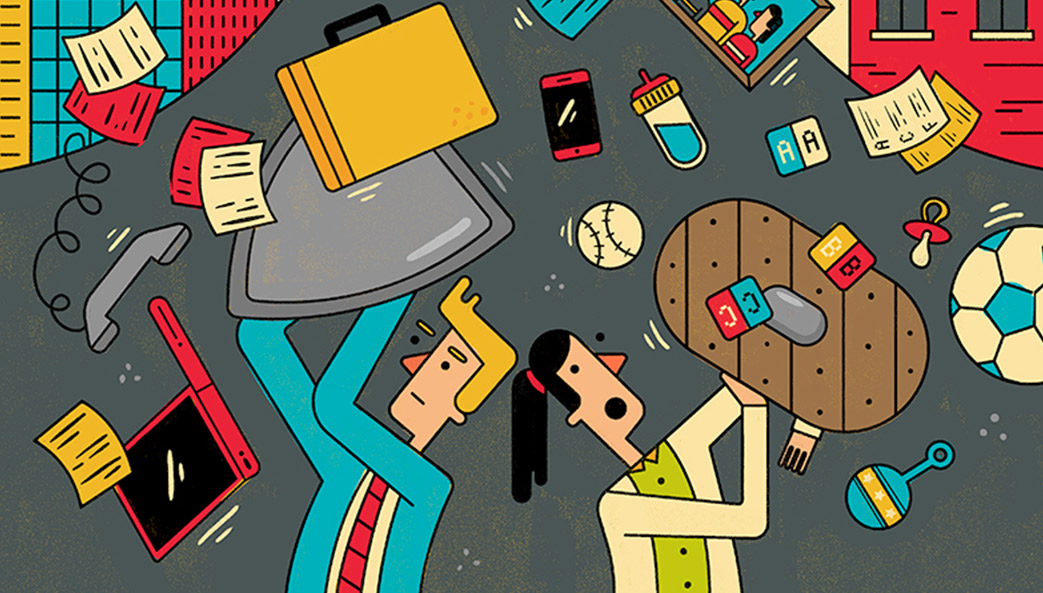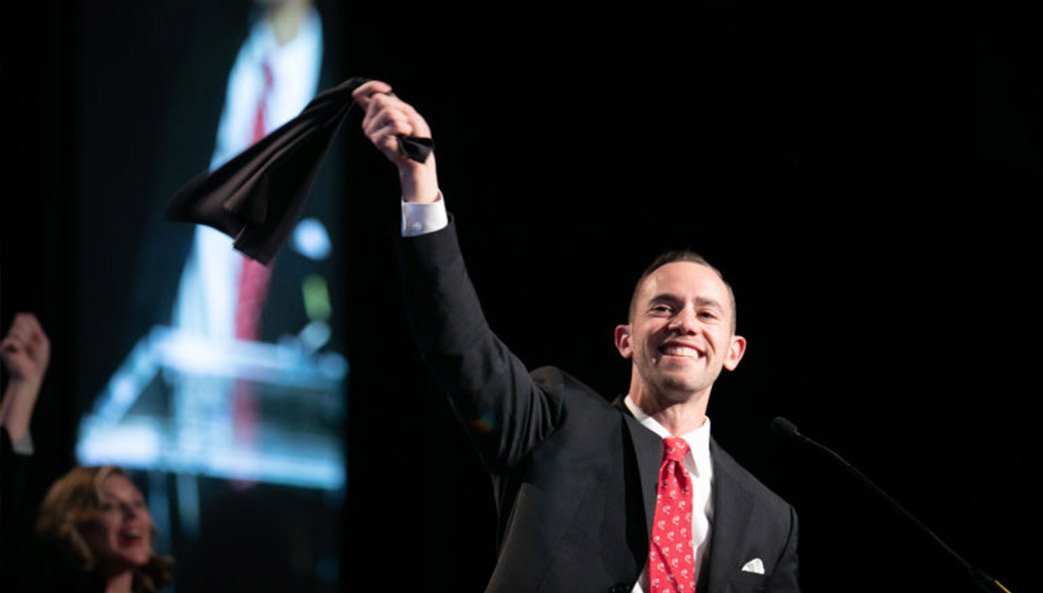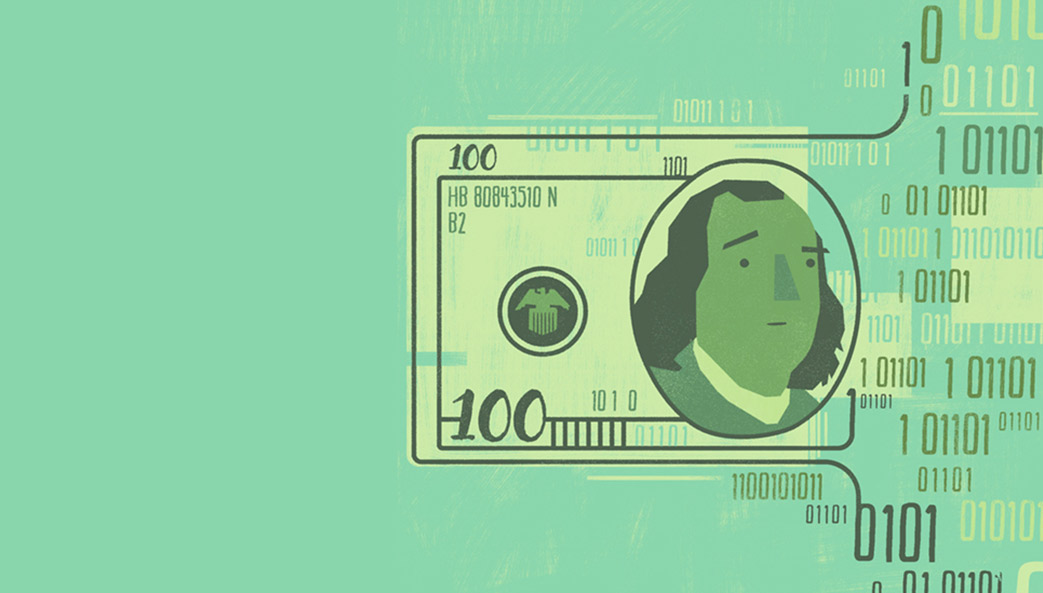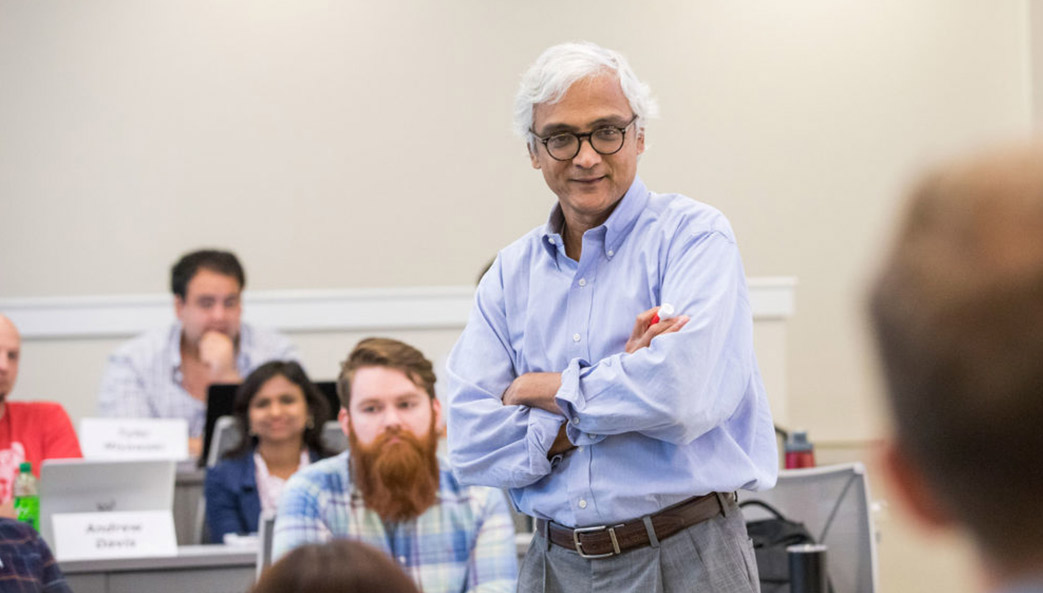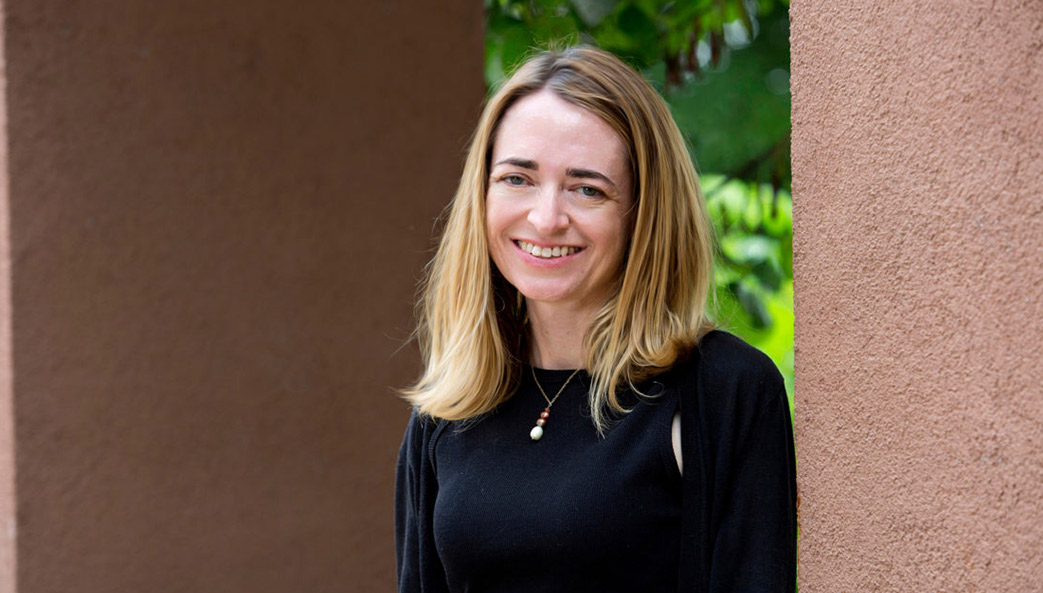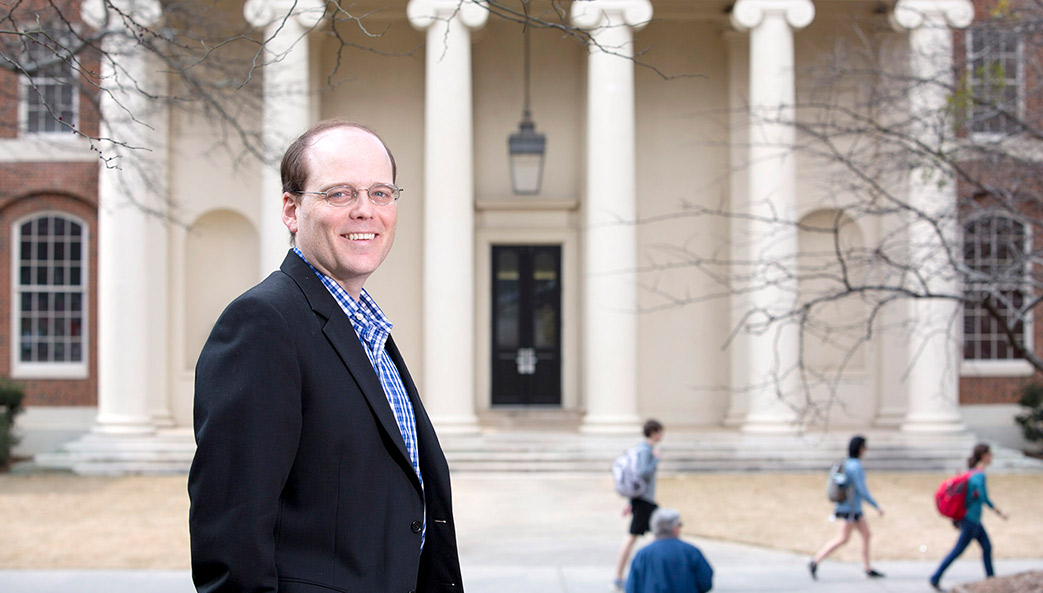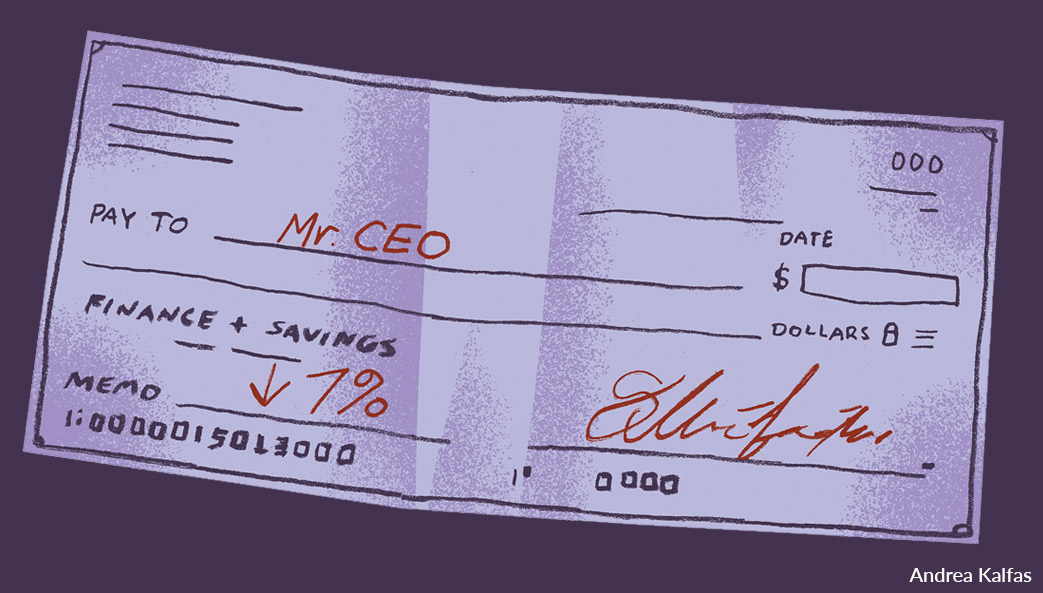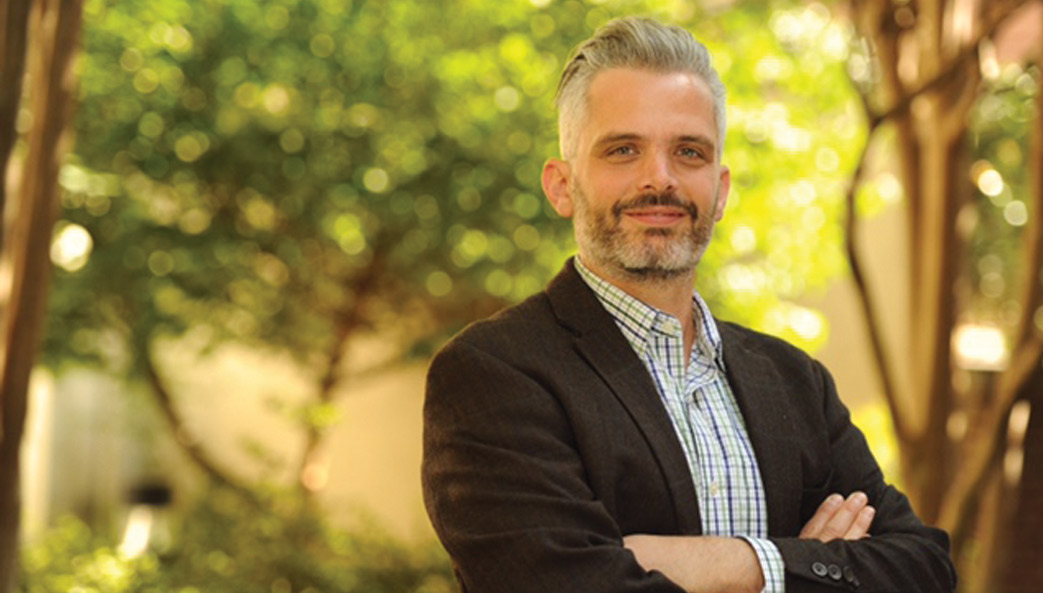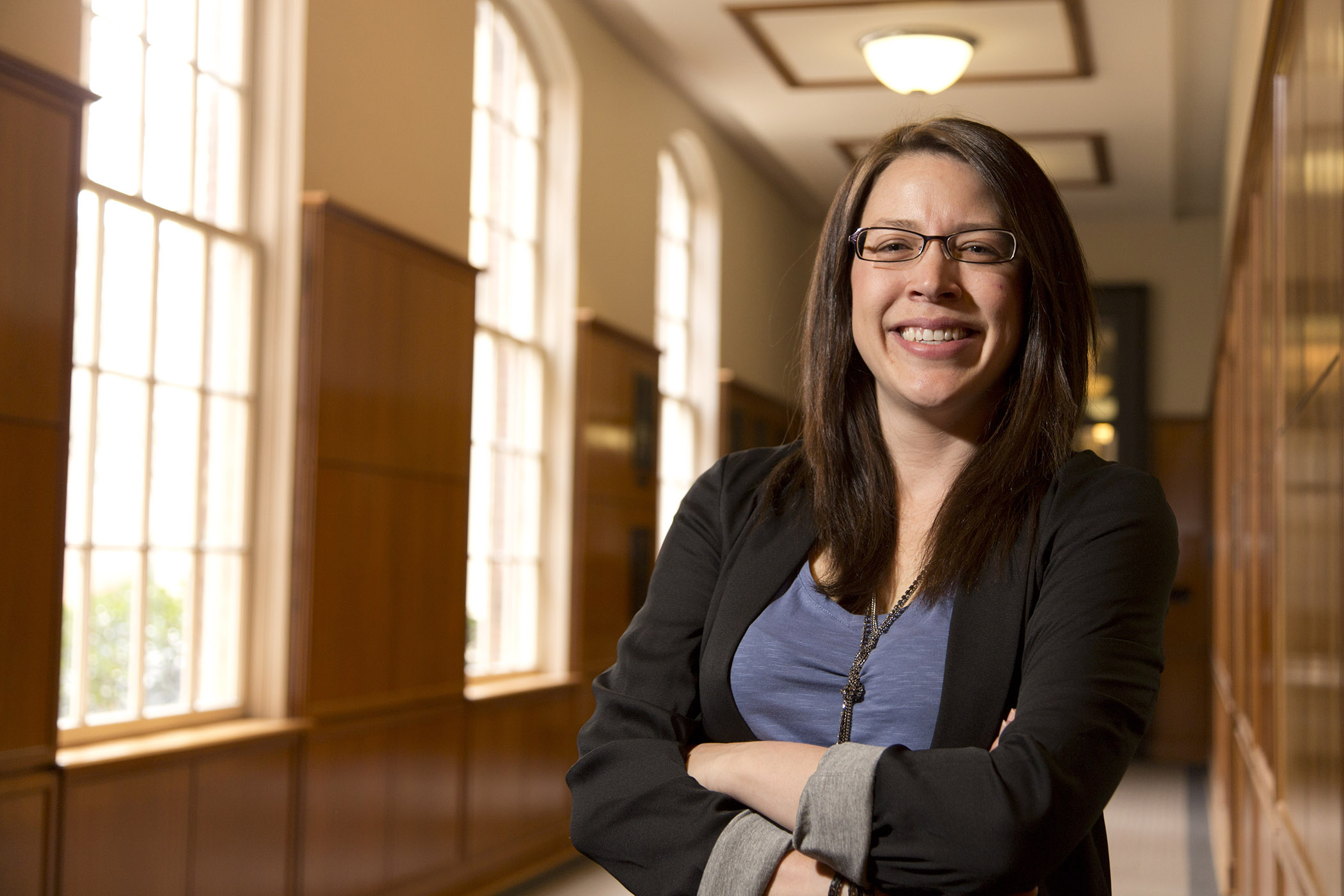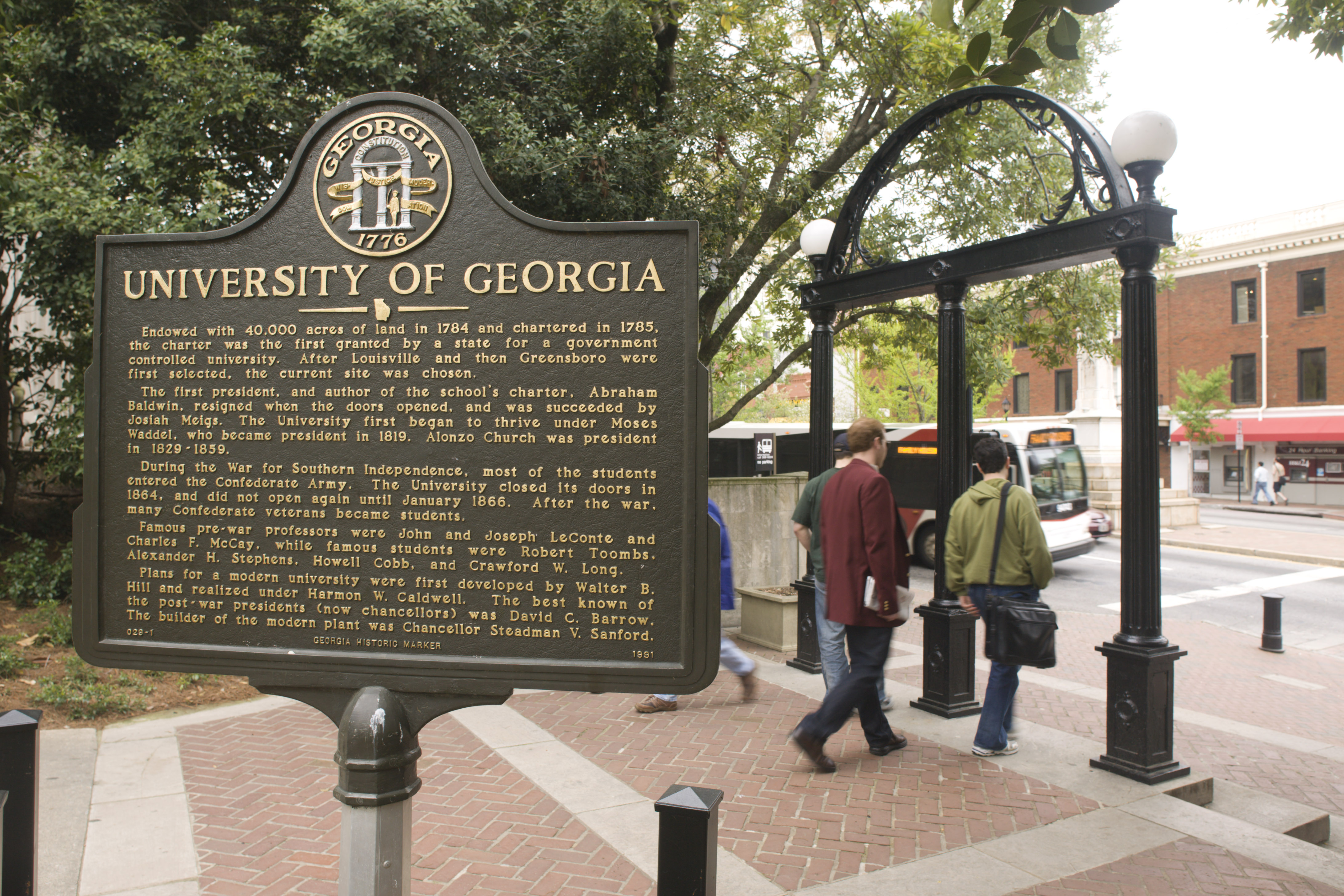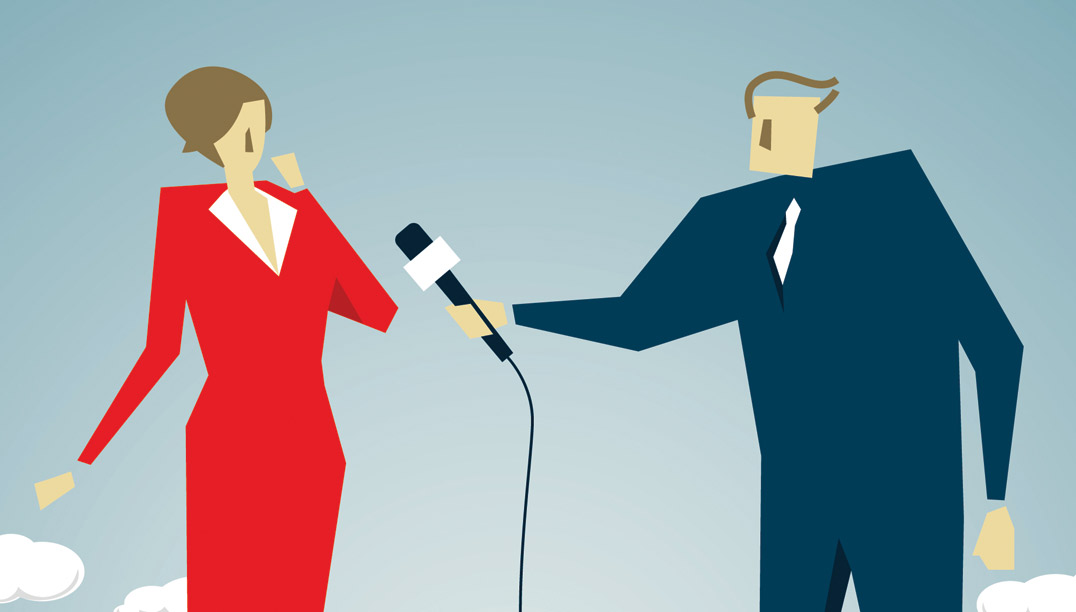Birth order influences CEO risk-taking
Younger siblings often take more chances as CEOs, study shows
America’s economic growth benefits minority markets
Selig Center’s Multicultural Economy Report shows minority groups have a combined buying power of $3.9 trillion
Terminus named fastest-growing alumni-operated business
The UGA Alumni Association recognized the fastest-growing companies owned or operated by alumni
Ending $100 bills might have more costs than benefits
Getting rid of large bills would have unintended consequences for people who follow the law
Payday loans not just a poor person’s issue
Researchers were surprised to learn that people from high-income households also engage in payday loan borrowing
How brands compete on social purpose
Do you like your cleaning products to be eco-friendly? Your shoes supportive of workers’ rights? Companies are increasingly using their good deeds to identify and differentiate themselves in the marketplace, and new research from UGA explains how and why it works.
In an article published in Harvard Business Review, Sundar Bharadwaj emphasizes the importance of aligning a social purpose with activities that are meaningful and appropriate for a brand.
“It makes more sense for a bank to invest in financial literacy or help the un-banked than it would to support a symphony orchestra,” says Bharadwaj, who holds the Coca-Cola Company Chair of Marketing at UGA’s Terry College of Business. “Financial literacy resonates with a bank’s brand and has a clearer association for customers and stakeholders.”
After studying many failed and successful campaigns, Bharadwaj and co-author Omar Rodriguez-Vila of Georgia Tech concluded that an effective social purpose strategy must create real value or customers may feel manipulated. A good way to ensure that a company’s efforts are paying real dividends is to partner with organizations or individuals who are already doing good work on an issue, according to Bharadwaj.
“If you don’t have credibility or authenticity, a social purpose campaign can absolutely hurt you,” he says.
This brief appeared in the spring 2018 issue of Research Magazine. The original press release is available at https://news.uga.edu/brands-social-purpose/.
Unintended consequences
Workplace sexual harassment policies can reinforce traditional gender stereotypes
Asian-Americans see the biggest gains in buying power
UGA’s Selig Center calculates the consumer buying power for several racial and ethnic groups
Female CEOs face subtle bias
Women encounter attitudes of “benevolent sexism”—stereotypically favorable, but potentially patronizing
High-pressure expectations lead to unethical behavior
When required to meet high standards, some employees will fudge results
Smart staffers: Why educated areas are good for business
Highly educated employees are associated with improvements in key areas of business practices
In negotiations, two jerks are better than one
Negotiations work best when both sides have matching personality traits—even if they’re both disagreeable—according to research from the Terry College of Business.
Conventional wisdom suggests that people who are outgoing and accommodating are better suited to negotiate, but a study co-authored by Fadel Matta and collaborators at several institutions found that two sides can reach accord through their common discord.
“Normally, you would consider agreeableness—that you’re cooperative and kind—to be a good thing. And being disagreeable—being cold—to be a bad thing,” said Matta, assistant professor of management. “But with negotiations we find that’s not necessarily true.”
Similarly, he said, being extroverted does not always translate into deal-making success.
At their core, negotiations are about a relationship, according to Matta. And like a relationship, they work best when both parties approach it the same way.
“If you’re a jerk and I’m a jerk, then it might seem like we’ll never get anywhere in negotiations, but it’s actually more useful to put two similarly minded people together,” he said.
The study was published in the Journal of Applied Psychology.
This brief appeared in the fall 2017 issue of Research Magazine. The original press release is available at http://news.uga.edu/releases/article/negotiations-researchs-jerks/.
It matters who you know
Half of all workers say they found their current job through a friend or social acquaintance. But although these “job-referral networks” help make the labor market more efficient, they also tend to have an “old boys’ club” character and perpetuate inequality, according to new research from the University of Georgia.
“On one hand, referral networks help to solve information problems in the labor market,” said Ian Schmutte, author of the study and assistant professor of economics at UGA’s Terry College of Business. “On the other hand, these networks are typically based on historical patterns of racial or class stratification.”
Schmutte’s synthesis of recent research, published in the IZA World of Labor, confirms that while good workers tend to know other good workers, most people are confined to fairly homogenous social spheres. And “despite the fact that there are lots of other ways to get information about people, firms are increasing, rather than decreasing, their use of job-referral networks,” he said.
Minority groups driving U.S. economy
In 2016, U.S. Hispanic buying power was larger than the gross domestic product of Mexico and bigger than the economies of all but 14 countries in the world.
That’s just one of the telling statistics that illustrates the unprecedented economic clout of U.S. minority groups in the latest Multicultural Economy Report from the Selig Center for Economic Growth at UGA’s Terry College of Business.
The report estimates the nation’s total buying power reached $13.9 trillion in 2016 and predicts it will hit $16.6 trillion by 2021, with minority groups making the fastest gains.
Hispanic buying power increased its economic clout from $495 billion in 2000 to $1.4 trillion in 2016—a 181 percent increase. Black buying power increased 98 percent from 2000 to 2016. And since 2000, Asian buying power has grown 222 percent to $891 billion, the biggest percentage increase of any U.S. minority group. During the same time period, the buying power of whites increased by 79 percent.
“Minority buying power is growing at a faster pace than the white consumer market for a number of reasons, such as demographics, increases in educational attainment and entrepreneurial activity,” said Jeff Humphreys, author of the report and director of the Selig Center.
Study finds barriers limit black households’ access to financial services
While black households see value in using financial planning services, most don’t pursue it due to barriers to entry including large gaps in income and net worth relative to other ethnic groups.
Study finds barriers limit black households’ access to financial services
While black households see value in using financial planning services, most don’t pursue it due to barriers to entry including large gaps in income and net worth relative to other ethnic groups.
Humanitarian or hotshot?
By Matt Weeks
Illustration by Missy Kulik
Can volunteering harm your workplace reputation? New research from UGA’s Terry College of Business finds co-workers’ attitudes can vary depending on their perception of someone’s charitable efforts—especially when they perceive a person is primarily volunteering to get ahead.
As personal and professional lives continue to intermingle thanks to the constant connection of cellphones and social media, today’s workers are often at the mercy of their colleagues’ appraisal, said the study’s lead author Jessica Rodell, an associate professor of management at the Terry College.
“Volunteering is a behavior that traditionally has little to do with work,” Rodell said. “It’s something that can be done with your kids’ school or through your church, but it turns out that this behavior can have a real impact on how people view you at work.”
Her research, co-authored with John Lynch, a former UGA graduate student and assistant professor of managerial science at University of Illinois-Chicago, finds that co-workers often have mixed feelings about their colleagues’ charitable efforts.
When volunteering is seen as intrinsically motivated, meaning the worker is seen as personally compelled to volunteer, both supervisors and co-workers tend to hold the volunteering employee in high esteem. However, if the worker is seen as a showboat who volunteers to enhance his or her image or score brownie points, colleagues and supervisors form a more negative opinion.
“We use people’s behaviors as signals of who someone is, and the more data we have, the more we know how to interact with them. Here, we are showing that volunteering is a piece of data that we use to determine someone’s character, which affects how we treat them,” Rodell said.
And, as it turns out, the treatment that results can be rather important in the workplace.
“In fact, if you have two people who have the exact same performance ratings at their job, but one of them volunteered for what appeared to be good reasons, that person would be more likely to get a raise or promotion because that volunteering positively affects their reputation at work,” she said.
Although volunteering is an inherently pro-social behavior, there are several reasons it can have negative repercussions. Colleagues may find a volunteer to be smug or superior. They may feel volunteers forsake their office work in order to volunteer, or that they volunteer just to get credit.

“We’re very attuned to certain social cues that help us determine why people do certain things, like volunteering,” Lynch said, “and there are very real consequences for that.”
Most often, though, volunteering is a mixed bag that brings both positive and negative connotations. In addition to the potential negatives, volunteers may be seen as thoughtful, caring and good at time management, which can reflect well in the business environment.
Fortunately, when it comes to volunteering, it appears the positive opinions tend to outweigh the negative ones.
“As co-workers, we are OK with the fact that someone might personally benefit from their volunteer work,” Rodell said, “with the caveat that they are also doing it for good reasons.
“Interestingly, we typically aren’t aware that we judge people based on these things; it’s something that happens without us really thinking about it. Reputations tend to be viewed generally as in ‘he is a good person’ or ‘she’s a good time manager.’ What we’ve shown with this research is that one reason you may think those things about your colleagues is because of their volunteer work.”
She explained that some people may not like that a co-worker could get promoted at work for doing something not related to work.
“But that’s why this finding is important,” she said. “Employees should know that if they’re going to volunteer, it’s going to have consequences depending on how they manage it. And, if done for the right reasons, it’s ultimately going to benefit them.”
Your co-workers may be judging you for volunteering
Volunteering benefits the community, but can it also harm your workplace reputation? New research from the University of Georgia Terry College of Business finds co-workers’ attitudes can vary depending on their perception of someone’s charitable efforts—especially when they perceive a person is primarily volunteering to get ahead.
Minorities’ buying power
May 10, 2016
Growth in the U.S. economy is increasingly driven by Hispanic and Asian American consumers—to the tune of $2 trillion per year—according to The Multicultural Economy 2015 report from UGA’s Selig Center for Economic Growth.
This annual report, which provides a comprehensive statistical overview of the buying power of African Americans, Asians, Native Americans and Hispanics for the country and each of its states, projected that total U.S. buying power in 2015 would amount to $13.5 trillion, a 213 percent increase from 1990, driven by an increasingly diverse population.
For example, the U.S. Hispanic market in 2015 was estimated to be $1.3 trillion, which is larger than the GDP of Mexico. In 2020, that figure is expected to reach $1.7 trillion. The Asian American market, comprising 18.3 million consumers, was thought to be $825 billion in 2015 and should grow to $1.1 trillion in 2020.
“The Asian and Hispanic markets will really drive U.S. consumer spending,” said Jeff Humphreys, director of the Selig Center. “Those two groups will account for a disproportionate amount of growth. The African American market will still expand at a rate that’s compelling, but the Asian and Hispanic markets are where you’ll see the really fast-paced growth.”
The report estimates that African American buying power was $1.2 trillion in 2015 and will reach $1.4 trillion in 2020, up from $320 billion in 1990.
These data can help businesses in numerous ways, such as in fine-tuning their marketing efforts toward specific groups of consumers, Humphreys said.

Jeff Humphreys is the director of UGA’s Simon S. Selig, Jr. Center for Economic Growth.
Research + real world: Finding partners through discovery and innovation
A significant step was taken this February, when Crystal Leach joined UGA as the founding director of Discovery and Innovation Partnerships, a new initiative jointly supported by the Office of the Vice President for Research and the College of Engineering.
Study: UGA has a $4.4 billion economic impact on Georgia
Georgia’s flagship university has a $4.4 billion annual economic impact on the state, according to a new study that analyzed how the three-part teaching, research and service mission of the University of Georgia contributes to the economy.
The study, conducted by UGA economist Jeffrey Dorfman, quantified variables such as the increase in earnings that graduates of the university’s schools and colleges receive, revenues from the licensing of university inventions, and the creation of business and jobs resulting from the university’s public service and outreach units.
“Nowhere is the bond between the state of Georgia and the University of Georgia more evident than in our far-reaching economic impact,” said President Jere W. Morehead. “The contributions of UGA faculty, staff, students and alumni are helping to ensure a strong economic future for our state.”
Educating Students
Each year, more than 9,000 UGA students earn undergraduate, graduate and professional degrees in fields ranging from business to engineering, the sciences, arts and humanities. To measure the economic impact of these degrees, Dorfman and his colleagues took data on earnings by major and multiplied the estimated value of each degree and major offered by UGA by the number of graduates in the 2013-2014 academic year. To ensure they were capturing the economic impact in Georgia alone, they multiplied the economic impact of the degrees awarded by the percentage of each college’s alumni who remain in the state after graduation. Overall, 62 percent of UGA graduates remain in the state after earning their degrees.
To put the value of UGA’s academic programs into perspective, the researchers took the economic impact created by the degrees that UGA awarded in the 2013-14 academic year and divided it by state funding. They found that UGA generates nearly $39 for each dollar of state instructional funding.
“The University of Georgia has more than 181,000 alumni in each of Georgia’s 159 counties,” noted Senior Vice President for Academic Affairs and Provost Pamela Whitten. “They include business leaders, teachers, physicians, scientists and elected officials, and all of them play a critical role in the economic vitality of our state.”
Fueling Discoveries
Discoveries by UGA scientists have resulted in more than 575 products that have reached the marketplace, including drugs, vaccines and software, as well as crop, ornamental plant and turfgrass varieties. Most recently, the FDA approved sale of a new drug, called Kanuma, that is based on a technology developed by a UGA startup company. Kanuma is a treatment for patients with a life-threatening ultra-rare disease.
Licensing and royalty revenue from these inventions contribute to UGA’s economic impact, as do companies that are launched based on UGA inventions. More than 60 Georgia companies are based on UGA inventions, including biotech companies Abeome Corporation and ArunA Biomedical, agricultural technology company Electrostatic Spraying Systems, and educational software company Cogent Education.
The research enterprise at UGA is on an upward trajectory, with a 7 percent increase in external funding from federal agencies such as the National Institutes of Health as well as private organizations such as the Bill and Melinda Gates Foundation over the past fiscal year. In addition to contributing to advances in health, safety and security, such research funding generates economic impact by bringing money into Georgia that is spent on equipment and personnel. Using a commonly used model known as IMPLAN, Dorfman and his colleagues found that UGA generates nearly $2 in economic impact for each $1 of federal and foundation research funding it receives.
“UGA researchers continually strive to make new discoveries that underlie the innovative products and companies that help drive Georgia’s economy,” said David Lee, UGA vice president for research. “Through our technology transfer and startup company support, the UGA research enterprise ensures that UGA discoveries reach their full potential for public benefit, in Georgia and beyond.”
Serving Georgia
Service to the state of Georgia is an integral part of UGA’s land-grant mission, and the university’s public service and outreach units contribute to economic prosperity and quality of life through programs for individuals, businesses and communities. Public Service and Outreach at UGA has a $345 million annual impact on the Georgia economy, the study found.
UGA’s Small Business Development Center, for example, last year provided 4,705 small business owners and prospective entrepreneurs with advice and expertise through its 17 offices across the state. SBDC assistance led to the creation of more than 3,000 new jobs over that period and helped launch more than 330 new businesses.
The researchers also quantified cost savings associated with the more efficient operation of state and local governments as a result of training programs offered by UGA’s Carl Vinson Institute of Government and the value of services offered by units such as Marine Extension.
“UGA’s public service experts are out in the state every day making a difference in people’s lives, whether by training elected officials and community leaders, helping companies grow their businesses, or diversifying opportunities for coastal fishermen,” said Jennifer Frum, vice president for public service and outreach. “It is our mission to help Georgia prosper by developing leaders, creating jobs and addressing issues critical to local communities. The economic impact study confirms what we already know, that we provide taxpayers a good return on their investment.”
Dorfman noted that he designed the study to only capture economic impacts that would not exist were it not for the presence of the University of Georgia. He also emphasized that many UGA programs create economic impacts that are difficult if not impossible to measure. The university’s 4-H youth development and mentoring programs, for example, have been shown to encourage healthy choices, civic participation and interest in science, technology, engineering and math. In the 2103-2014 school year, 4-H served more than 115,000 students in schools across Georgia.
“Our findings are a conservative estimate of the university’s economic impact on the state of Georgia,” Dorfman noted, “so the $4.4 billion figure that we arrived at should be treated as the minimum impact UGA has on the state.”

Jeffrey Dorfman is a professor in UGA’s College of Agricultural and Environmental Sciences.
Why CEOs delay sharing bad news—and how to stop it
By Matt Weeks
An important part of a CEO’s job is to communicate a business’s value to shareholders. Good news is usually shared with investors right away, but bad news tends to lag. A new study from the University of Georgia Terry College of Business examines why CEOs delay the release of bad news and how that can change.
Top managers face a double-edged sword when they communicate news to shareholders. Being open about a firm’s recent trajectory is good for investors, but can be harmful for a CEO’s career.
“The CEO doesn’t want to get fired, and is concerned with how the market will view his or her performance as a manager if they release poor company performance,” said John Campbell, an associate professor of accounting at the Terry College. “The idea, then, is that the CEO will delay the release of bad news as long as possible in hopes that good news will come along to offset it, so that the bad news never has to be released.”
These career concerns can create a barrier to open and timely dialogue between the firm and its investors. In an effort to understand this phenomenon, prior academics found something of note. Since the passage of Regulation Fair Disclosure in 2000, which requires CEOs to disclose company news to all investors simultaneously, CEOs seemed to no longer delay the release of bad news.
“One set of researchers noticed that CEOs stopped delaying bad news after the passage of Reg. FD, a regulation that has absolutely nothing to do with career concerns. So we were puzzled by that,” Campbell said. “If I’m a CEO under Reg. FD, I can still delay bad news. I just don’t tell anyone. So we decided to look into it.”
Their findings are included in a paper called “Do Career Concerns Affect the Delay of Bad News Disclosure?” that Campbell co-authored with fellow Terry College professor Stephen Baginski, Terry doctoral candidate Lisa Hinson and David S. Koo at the University of Illinois Urbana-Champaign (and a Terry College Ph.D. graduate from 2013). The paper was presented at the 2015 Canadian Academic Accounting Annual Conference
The authors found that Regulation Fair Disclosure doesn’t eliminate the delay of bad news release, but it did change the way firms forecast their earnings. More importantly, the authors find that previous researchers’ failure to account for these changes in forecasting behavior led to overstated conclusions on the effectiveness of Regulation Fair Disclosure on eliminating bad news delay.
“We look at management forecasts, and around this time, managers started issuing more range forecasts versus point forecasts,” said research co-author Lisa Hinson. “Basically, the manager would say ‘We expect earnings per share to be between 2 and 6 cents’ instead of saying, ‘We expect it to be 4 cents.'”
Around the same time, CEOs became more likely to simultaneously issue earnings forecasts for the next quarter and announce the earnings of the previous quarter. Taking these new findings into account, the researchers concluded that Reg. FD did not have much of an effect on the release of bad news relative to good news.
So what explains the delay of bad news disclosures? Money. Specifically, the kind of severance compensation paid to CEOs. The researchers found that top-level severance pay helped alleviate the fear of being fired, freeing CEOs to open up about failures.
“There’s a lot of people who think that CEO severance pay is a rip-off,” Campbell said. “They look at it and say, ‘Why are you paying this guy so much money when he was fired at his job?’ But if it reduces the manager’s career concerns enough, they will take actions that they otherwise might not have. They take more risk and, in this case, accelerate the disclosure of bad news. They don’t feel as concerned about being fired in the short run.”
The key word being “enough.” Severance packages (or ex-ante agreements) are standard for many C-suite jobs. But not all are created equal. To keep CEOs open and honest about their forecasts, their compensation needs to be in the top 50 percent, Campbell said.
That’s equal to about $8 million, or nine times a typical CEO’s yearly salary.
“If you give a manager enough severance, they reach the point where they don’t differentiate between good and bad news, they disclose to investors on an equally timely basis,” Campbell said.
That level of transparency translates into better conditions for investors overall, the authors said.
“It’s typically good to encourage CEOs to take risks and invest in positive net-present-value projects,” Hinson said. “And the markets generally like to know information as soon as the managers know, rather than getting it at a delay. It keeps capital market participants informed and leads to more efficient capital allocation.”
The study is available online at http://papers.ssrn.com/sol3/papers.cfm?abstract_id=2537580.
Growth in the U.S. market increasingly driven by Hispanic and Asian consumers
By Matt Weeks
Growth in the U.S. market is increasingly driven by Hispanic and Asian consumers, to the tune of nearly $2 trillion per year. That’s one takeaway from the 2015 Multicultural Economy Report from the University of Georgia’s Selig Center for Economic Growth.
The nation’s projected total buying power in 2015 is $13.5 trillion, a 213 percent growth since 1990. That number is bolstered by an increasingly diverse populace, according to the annual report, which provides a comprehensive statistical overview of the buying power of African-Americans, Asians, Native Americans and Hispanics for the U.S. and each of its states.
For example, the U.S. Hispanic market in 2015 will be $1.3 trillion, which is larger than the GDP of Mexico. In 2020, that amount will reach $1.7 trillion. The Asian market, comprised of 18.3 million Americans, will be $825 billion in 2015 and grow to $1.1 trillion in 2020.
“The Asian and Hispanic markets will really drive the U.S. consumer market,” said Jeff Humphreys, director of the Selig Center. “Those two groups will account for a disproportionate amount of growth. The African-American market will still expand at a rate that’s compelling, but the Asian and Hispanic markets are where you see the really fast-paced growth.”
The report predicts that African-American buying power will be $1.2 trillion in 2015 and reach $1.4 trillion in 2020, up from $320 billion in 1990.
This year’s report, available for purchase at the Selig Center’s website, also breaks down the buying power of minority subgroups, such as Mexicans and Puerto Ricans in the Hispanic category, and Asian Indians, Chinese and Japanese in the Asian category.
Richer data can help businesses fine-tune their marketing efforts toward specific consumers, Humphreys said.
“Although we’re already splitting the U.S. market into a number of groups, within each of these large groups are very distinct subgroups that are often quite different culturally and could respond to advertising in different ways or may have preferences in terms of products that differ among the groups because of difference in culture or countries of origins,” Humphreys said. “So the one-size-fits-all marketing approach may not work as well as a more targeted strategy.”
“We have the per capita amounts for these subgroups, which can explain a lot. The Asian Indian subgroup is actually smaller in population than the Chinese subgroup, but their per capita buying power is just off the charts,” he added.
Humphreys has been preparing the Multicultural Economy report for 24 years. Since 1990, he has documented the ups and downs of U.S. consumers.
“The biggest change I’ve seen over time is the focus or the interest level has increased for Hispanic estimates after Census 2000,” he said. “That was kind of a wakeup call to corporate America about the importance of the Hispanic consumer. Many companies found that they were behind in terms of targeted market efforts to Hispanic consumers.”
“Since the Great Recession, I’ve seen an interest in the Asian buying power numbers pick up,” he added. “Part of the reason for that is demographics—there are just more Asian consumers now. But another reason is the fact that the Asian group was less affected by the Great Recession than the other groups. That’s primarily because Asians tend to be very highly educated and therefore were in occupations and industries that were less affected by the Great Recession. Asian buying power held up better than the buying power of the other groups, so I think companies were looking for opportunities in that market more than they were prior to the Great Recession.”


